CV + Contact
BIOGRAPHY
BORN 1987 IN BELFAST, NORTHERN IRELAND, UK. BASED IN LOS ANGELES AND NEW YORK CITY.
Jonathan David Smyth, also known as Julian Scott, explores various media including photography, performance, moving image, sculpture, and installation. His work has garnered international recognition, having been exhibited and screened at prestigious venues worldwide, such as Free Range in London, UK; PH21 Gallery in Budapest, Hungary; Auckland Festival of Photography in New Zealand; Jimei x Arles International Photo Festival in Xiamen, China; LAST Projects in Los Angeles, CA; Photoville in Brooklyn, NY; The Ulster Museum in Belfast, UK; Metro Pictures Gallery in New York City; and the FotoFest 2022 Biennial, If I Had A Hammer in Houston, TX.
Smyth's art is held in both public and private collections and has been featured in numerous esteemed art publications, including Apartamento, Aint-Bad, Float Photo Magazine, and Musée Magazine. Additionally, his work has been referenced in various books such as Michelle Dunn Marsh's Seeing Being Seen: A Personal History of Photography and the forthcoming Michael Petry release, Mirror: Mirror. Smyth has also been a guest on Good Morning, Sodomites! with comedian Zach Noe Towers and BBC Radio Ulster's The Arts Show.
Smyth holds a BA with Honours in photography and film from Edinburgh Napier University in 2010 and an MFA in photography from Parsons School of Design in 2014. He has served as a Visiting Artist and Instructor at prestigious institutions, including Photographic Center Northwest in Seattle, WA, International Center of Photography in New York, and at his alma mater, Parsons School of Design in New York. Currently, Smyth has published two monographs with bd-studios.com (New York City): Just One More in 2017 and Now That You've Gone and Come Back in 2023, the latter released in tandem with his Artist-in-Residency at the Tom of Finland Foundation in Los Angeles. His third monograph is scheduled for release in 2024.
Jonathan can be reached at: info@jonathandavidsmyth.com
Follow him on social media: ︎ ︎
Smyth's art is held in both public and private collections and has been featured in numerous esteemed art publications, including Apartamento, Aint-Bad, Float Photo Magazine, and Musée Magazine. Additionally, his work has been referenced in various books such as Michelle Dunn Marsh's Seeing Being Seen: A Personal History of Photography and the forthcoming Michael Petry release, Mirror: Mirror. Smyth has also been a guest on Good Morning, Sodomites! with comedian Zach Noe Towers and BBC Radio Ulster's The Arts Show.
Smyth holds a BA with Honours in photography and film from Edinburgh Napier University in 2010 and an MFA in photography from Parsons School of Design in 2014. He has served as a Visiting Artist and Instructor at prestigious institutions, including Photographic Center Northwest in Seattle, WA, International Center of Photography in New York, and at his alma mater, Parsons School of Design in New York. Currently, Smyth has published two monographs with bd-studios.com (New York City): Just One More in 2017 and Now That You've Gone and Come Back in 2023, the latter released in tandem with his Artist-in-Residency at the Tom of Finland Foundation in Los Angeles. His third monograph is scheduled for release in 2024.
Jonathan can be reached at: info@jonathandavidsmyth.com
Follow him on social media: ︎ ︎
ARTIST STATEMENT
I’VE SPENT YEARS OBSESSIVELY WRITING, RECORDING, AND DOCUMENTING MY LIFE.
As an adopted child in Northern Ireland, I was only too aware of the differences between my family and my friends at school. For years, I wasn’t allowed to talk about my adoption, and it made me feel angry and ashamed. I came out as gay at fourteen. I moved out of my parents’ house at sixteen. I then began to be honest through photography in the hope that other people might relate to my story, too. I am no longer ashamed, but I use the memory of feeling inadequate and out-of-place as a starting point for my artwork.
Download Artist CV (PDF)
EXTERNAL LINKS
FEATURED ARTWORK + CONTRIBUTING PIECES + CURATORIAL WORK.
- River to River Festival 2019, LMCC - participating artist
- Jason Boeckli: Farewell to New York - participating artist
- Royal Ulster Academy of Arts - featured artist
- Inspirational 30 Magazine - featured artist
- The Art of Being Queer - featured artist
- Float Photo Magazine: Book Library - featured artist
- Aint-Bad Magazine: Articles - featured artist, June 2018
- Visual AIDS: 20th Annual Postcards from The Edge - participating artist
- MikeyPod: Episode 245 - featured artist
- Aint-Bad Magazine: Articles - featured artist, Dec 2017
- The Passporte Gallery: Family - featured artist
- Float Magazine: As You Were - curator
- Filmideo 2017 - featured artist
- Float Photo Magazine: Space - featured artist
- Float Photo Magazine: Portfolios - featured artist
- Visual AIDS: 19th Annual Postcards from The Edge - participating artist
- L.A. Photo Curator: Hometown - honourable mention
- PH21 Gallery: Portraiture - featured artist
- Float Photo Magazine: Failure - featured artist
- Openings Collective: Beauty - featured artist
- participating artist
- Float Photo Magazine: LOVE - featured artist
- Vinyl Depford: Vitaphone No More! - featured artist
- PhotoFeast: Artist Talks - featured artist
- #IRL: In Real Life - featured artist
- Old Truman Brewery: Free Range 2010 - featured artist
- Source: Graduate Photography Online 2010 - featured artist
Exhibitions + News
EXHIBITIONS + PERFORMANCES + EVENTS
TOM OF FINLAND FOUNDATION - ARTIST-IN-RESIDENCE SOLO EXHIBITION + BOOK LAUNCH: “AROUND THE HOUSE AND IN THE GARDEN” (2023).
Tom of Finland Foundation, Los Angeles, September 14–October 1, 2023.
Works on view: 17 colour images printed on fabric and 5 colour transparancies from the series, “QUEER. SULTRY. SUMMER.” produced during my time as an Artist-in-Residence at the TOM House, Echo Park, LA, June–October 2023.
Exhibition + Book Launch curated by Rick Herron, Jonathan David Smyth, and José Tinoco.
Installation shots by Champ Daniels.
FOTOFEST BIENNIAL CENTRAL EXHIBITION - “IF I HAD A HAMMER” (2022).


Silver Street Studios & Winter Street Studios, September 24–November 6, 2022.
Works on view: 20 selections from BETWEEN YOU AND ME (2019–2020) for Foto Fest 2022 Biennial, Houston, TX.
Co-curated + organized by Steven Evans, Max Fields, and Amy Sadao.
LOWER MANHATTAN CULTURAL COUNCIL - RIVER TO RIVER FESTIVAL: “THE LISTENING SCHOOL” (2019).
The Financial District, New York, NY, 24–26 June 2019.
As part of a collaboration for Lower Manhattan Cultural Council with artists Kimberley Acquaro, Kate Harding, Sara Jimenez, Sto Len, Ernesto Pujol, Valarie Samulski, Young Sun Han, Molly Teitelbaum, Benjamin Thorpe, Riva Weinstein, and Joy Whalen. Curated by Ernesto Pujol and Danielle ML King.
Images by Nisa Ojalvo.
LOWER MANHATTAN CULTURAL COUNCIL - RIVER TO RIVER FESTIVAL: “THE LISTENERS” (2019).


Federal Hall, 26 Wall Street, New York, NY, 27 June 2019.
As part of a collaboration for Lower Manhattan Cultural Council with artists Kimberley Acquaro, Kate Harding, Sara Jimenez, Sto Len, Ernesto Pujol, Valarie Samulski, Young Sun Han, Molly Teitelbaum, Benjamin Thorpe, Riva Weinstein, and Joy Whalen. Curated by Ernesto Pujol and Danielle ML King.
Images by Nisa Ojalvo.
JIMEI X ARLES INTERNATIONAL PHOTO FESTIVAL - CROSSOVER PHOTOGRAPHY: “YOU ARE NOT PARANOID, OBSERVE YOURSELF BEING WATCHED” (2019).
Jimei x Arles International Photo Festival, Xiamen, China. Curated by MiA Art Collective. 23 November 2018–02 January 2019.
Works on view: 75 selections from Just One More (2012–2019).
Installation shots by Grace Noh and Yichen Zhou.
NEW YORK PUBLIC LIBRARY - “JUST ONE MORE: BOOK LAUNCH EVENT - JONATHAN DAVID SMYTH AND MICHELLE DUNN MARSH IN CONVERSATION” (2017).

The New York Public Library, Jefferson Market building, New York, NY, 02 November 2017.
This conversation took place on 02 November 2017 at the New York Public Library in New York City. The occasional celebrated the release of Just One More: Self-Portraits 2012–2017 published by bd-studios.com.
Camera Operator: Dana Stirling
Video Editing: luke kurtis
Photography: Jonathan David Smyth
“#IRL: IN REAL LIFE” - PARSONS GRADUATE PHOTOGRAPHY PROGRAM THESIS EXHIBITION (2014).
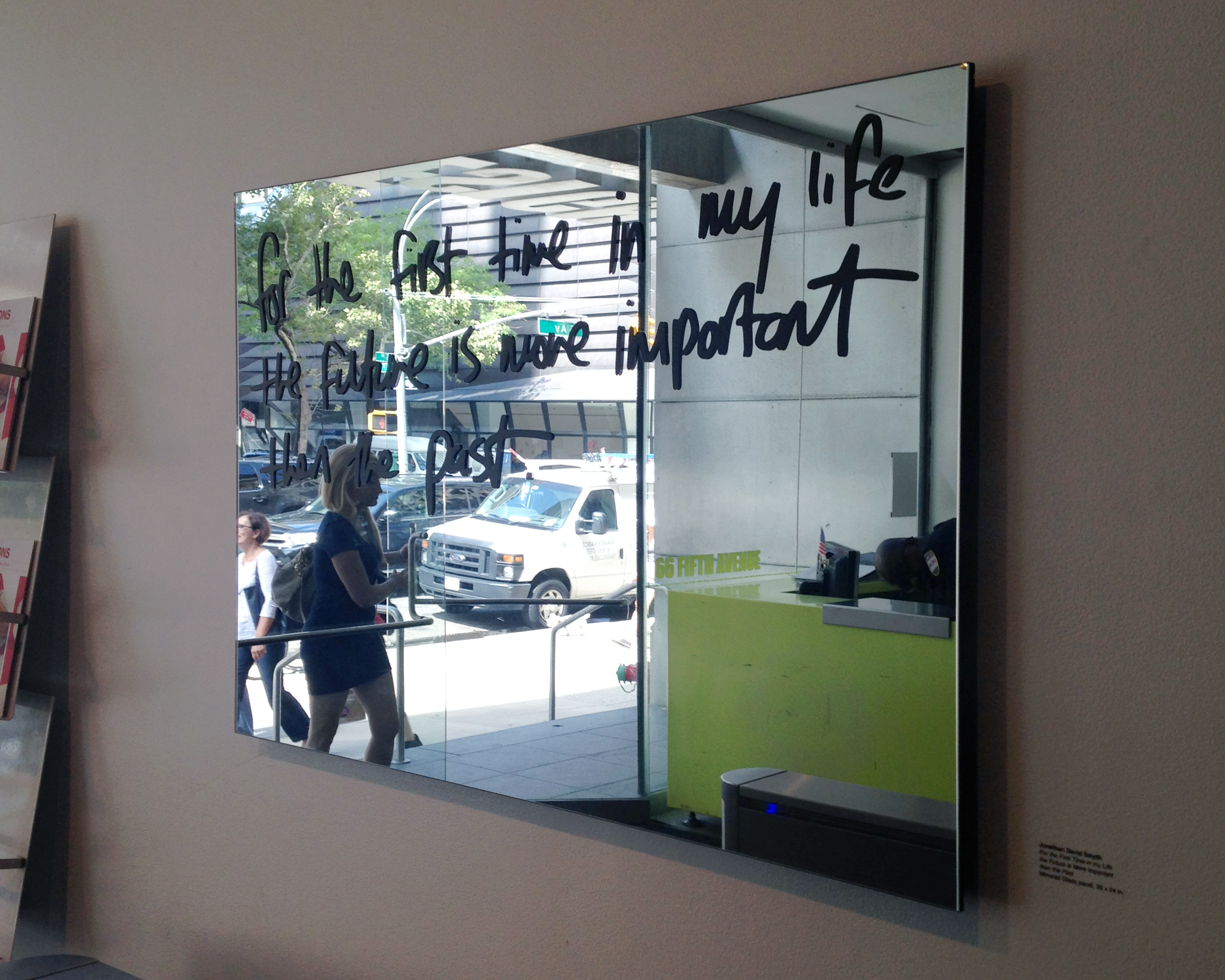

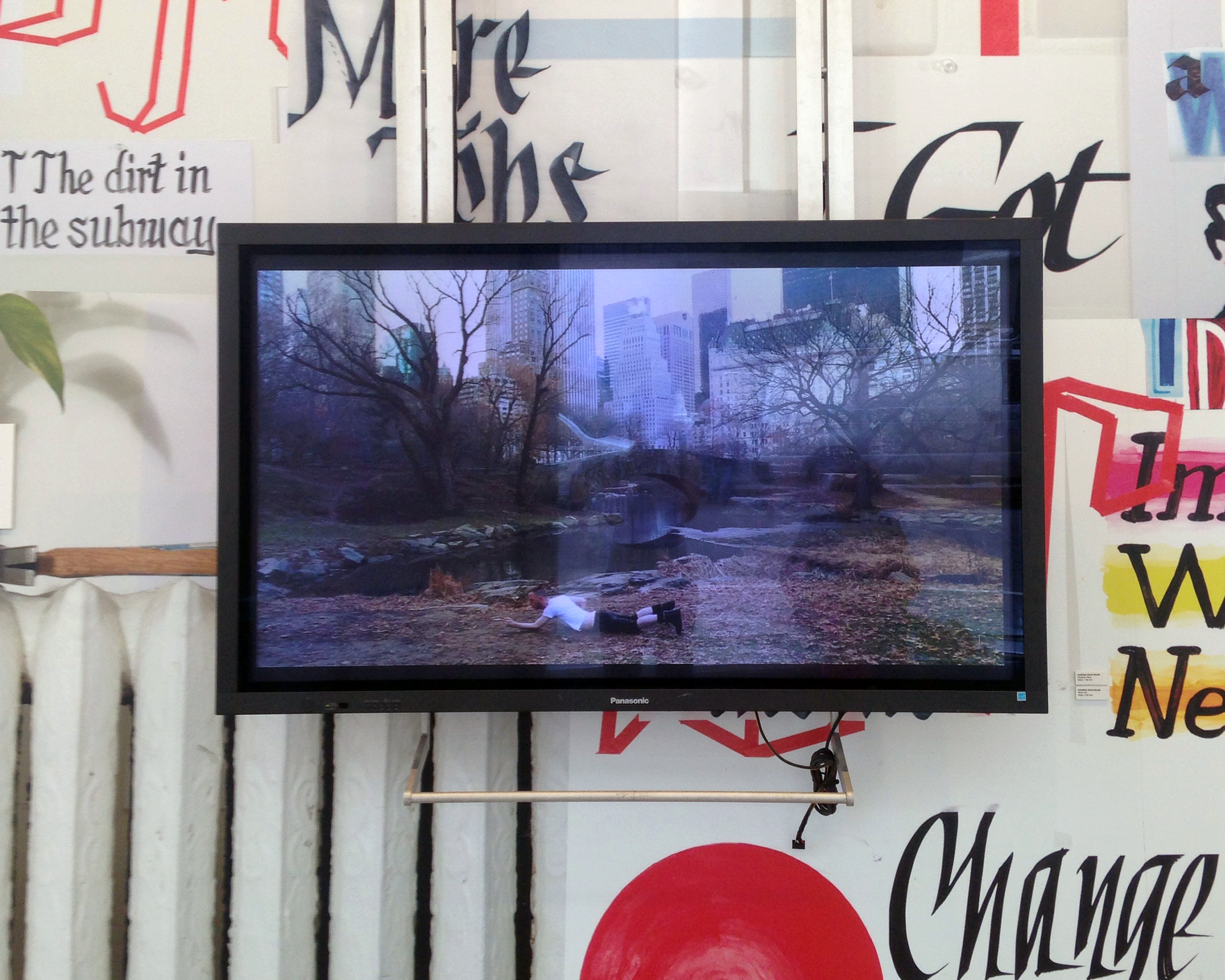
Arnold and Sheila Aronson Galleries, Parsons School of Design, New York, NY, 14 August–11 September, 2014.
Works on view: For the First Time in my Life (2014), Somewhere is Always Some Place Else (2013), Work Out (2013), Obstacle Race (2013).
Press + Media
PUBLICATIONS
SELECTED ARTIST BOOKS + ZINES + CATALOGUES.
![]()
![]()
![]()
![]()
![]()
![]()
![]()
![]()
![]()
![]()





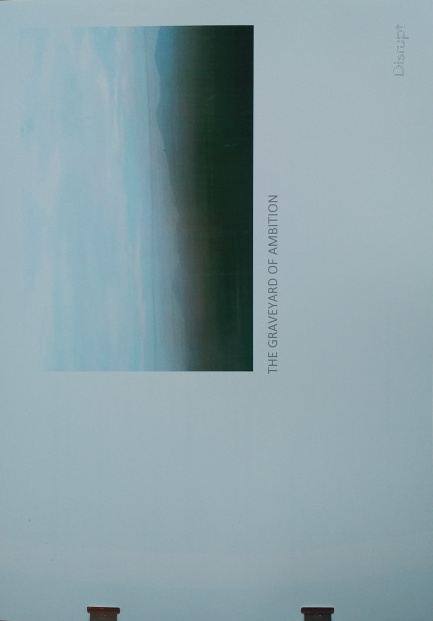
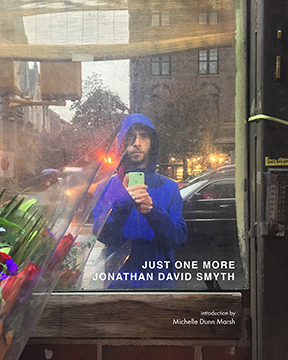



- Smyth, Jonathan David. Now That You’ve Gone and Come Back. New York, bd-studios.com, 2023.
- Dunn Marsh, Michelle. Seeing Being Seen. Seattle & New York, Minor Matters Books, 2022, pp. 141.
- Parsons School of Design. #IRL: In Real Life. Jersey City, Conveyor Editions, 2014, pp. 26-27.
PRINT + ONLINE
SELECTED INTERVIEWS + FEATURES + LISTINGS.
- Float Photo Magazine, Book review, "Jonathan David Smyth: Just One More," 3 July 2018
- Pretty Green Tea - Interview, 16 March 2018
- The New York Times - Style Section, Scene City, "Postcards, Jazz and Bowling," 26 January 2018
- MikeyPod - Podcast interview, "Episode 245: Photographer Jonathan David Smyth," 1 January 2018
- Aint-Bad Magazine - Interview, "Jonathan David Smyth: Just One More," 30 December 2017
- BBC Radio Ulster - Interview, "The Arts Show," 6 October 2017
- Aint-Bad Magazine - Featured artist, "Jonathan David Smyth: House Hold," 3 April 2017
- KALTBLUT Magazine - News feature, "HE - Questioning and Queering 'Masculinity,'" 21 March 2017
- River View Observer - News feature, "A World Where We Belong," 5 March 2017
- Art Reveal Magazine - News feature, "Flat Magazine - Launch Party," 15 December 2016
- The Spectator - Exhibition review, "Me and My Selfie," 28 October 2015
- Pretty Green Tea - Interview, 27 January 2015
- Musée Magazine - Exhibition review, "#IRL: In Real Life," 28 August 2014
MEDIA CLIPS
PROMO VIDEO: “STUDIO VISIT WITH BD-STUDIOS.COM,” 29 AUGUST 2018.
Video interview and editing: luke kurtis
Music: "everlasting" from "electronic quartets" by luke kurtis
PODCAST: MIKEYPOD, “EPISODE 245,” 01 JANUARY 2018.
INTERVIEW: BBC RADIO ULSTER, “THE ARTS SHOW,” 06 OCTOBER 2017.

SELECTED REVIEWS
LA PHOTO CURATOR: “HOMETOWN,” HONOURABLE MENTION BY CURATOR BARB PEACOCK, 10 DECEMBER 2016.
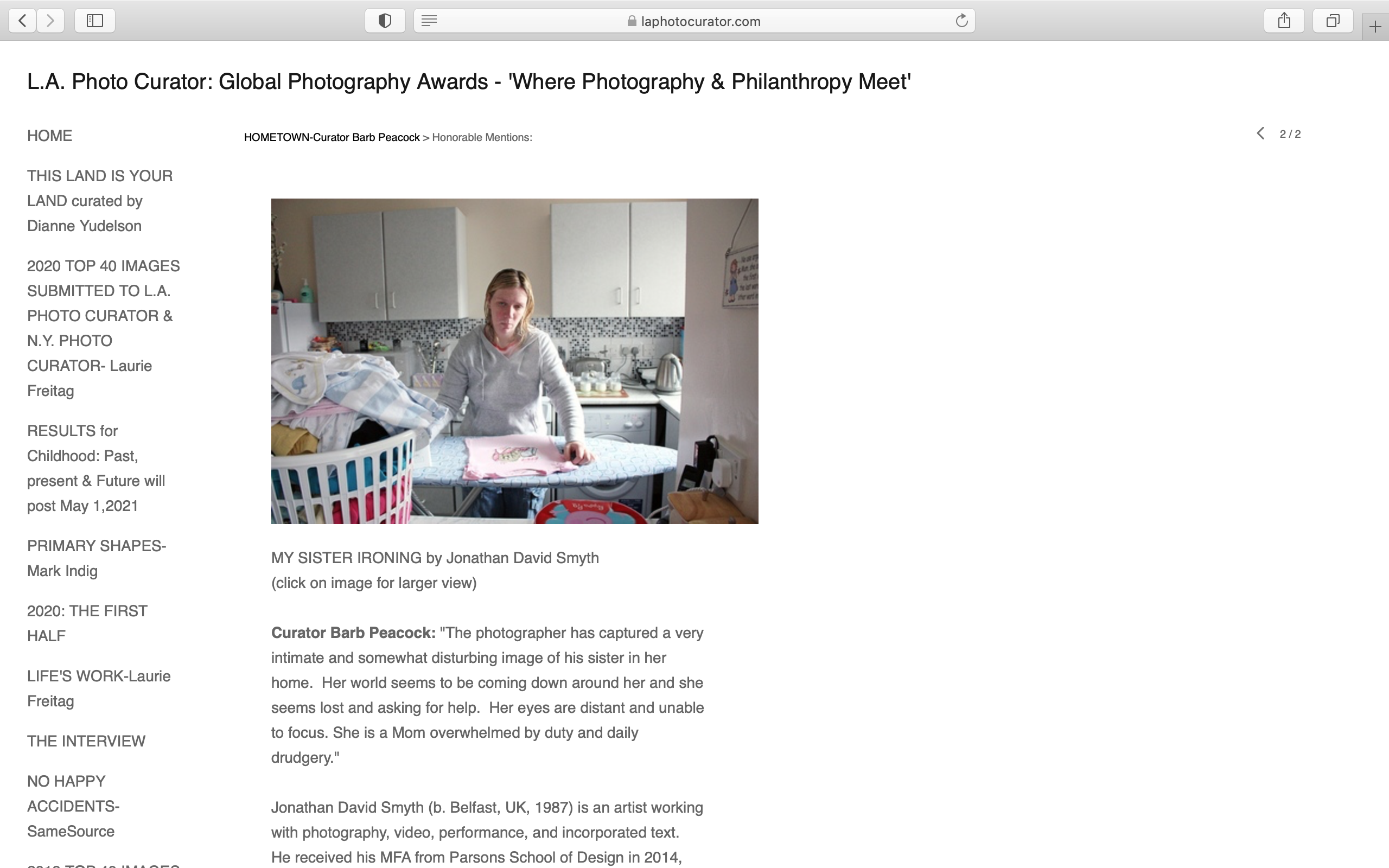
[Smyth] has captured a very intimate and somewhat disturbing image of his sister in her home. Her world seems to be coming down around her and she seems lost and asking for help. Her eyes are distant and unable to focus. She is a Mom overwhelmed by duty and daily drudgery.
Read full article
![]()
Read full article
THE SEATTLE TIMES: “ME AND MY SELFIE,” BY GAYLE CLEMANS, 22 SEPTEMBER 2015.
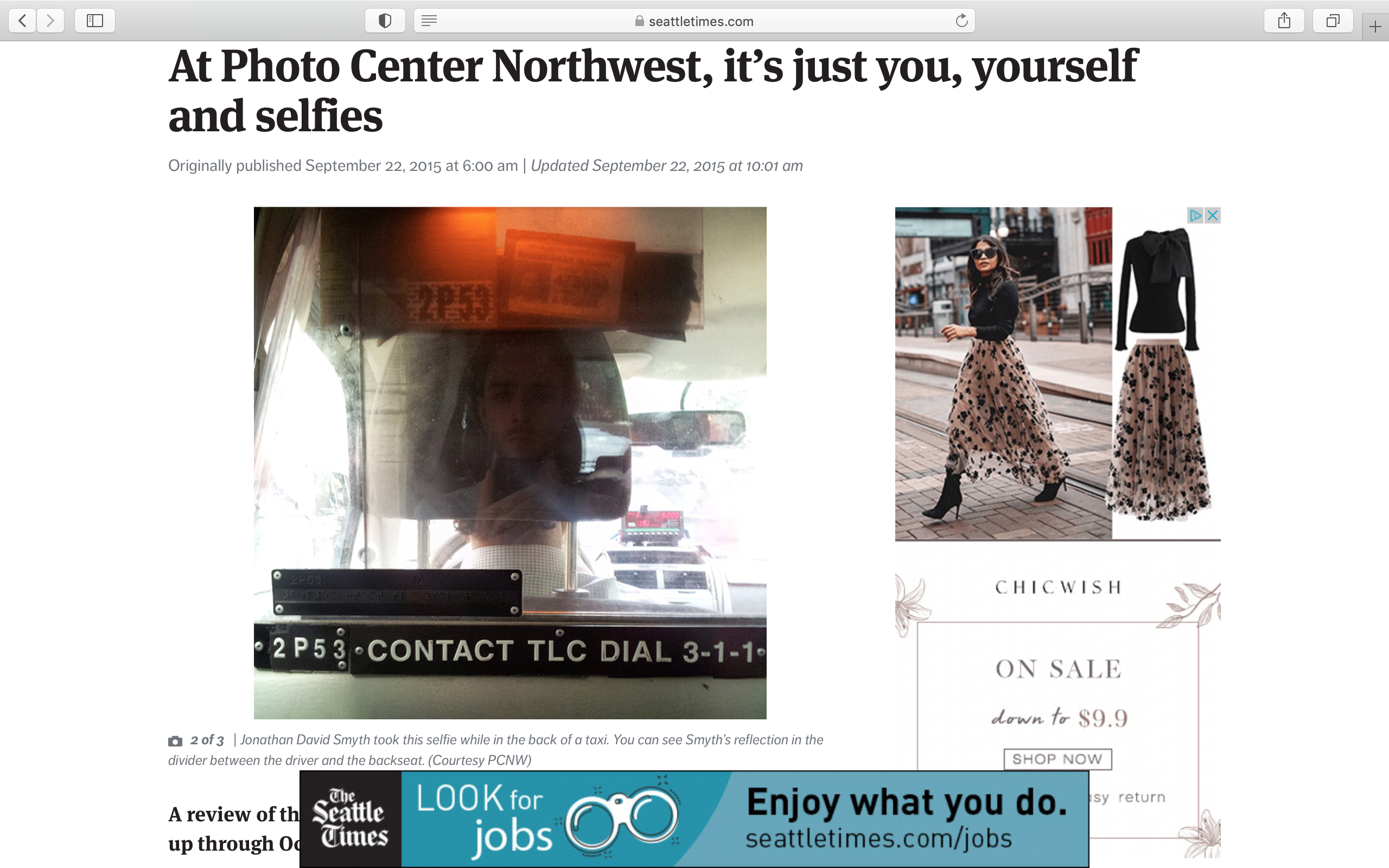
THE SKINNY: “EDINBURGH DEGREE SHOW,” BY RACHEL BOWLES, 31 MAY 2010.

Read full article
TEXTS
“I AM AN IMMIGRANT AND SO ARE YOU” - A CONVERSATION WITH JONATHAN DAVID SMYTH AND DANA STIRLING, JUNE 2017.
The following text originally appeared in the monograph Just One More: Self-Portraits 2012–2017, published in 2017 by bd-studios.com (New York City).
Dana Stirling: Let’s start with the cover image. How did it come about?
Jonathan David Smyth: One of the first things I fell in love with about New York City was how amazingly bright the deli stores are at nighttime. You can’t miss them because the fluorescent lights dominate the sidewalk. There is a deli in West Chelsea that is a favorite of mine. I make a point to not plan these photos because I want them to be spontaneous, but in the back of my head, I had always dreamed of getting a photo at this particular deli. One early evening it was pouring with rain, and I was running to the train in a bright blue raincoat. I passed by the deli and caught my reflection behind the flower display, and I remember thinking, “This is it! This is the perfect time to take a self-portrait here.” So, that’s why I decided to use this image for the cover. It’s special because it’s probably the only “planned” image in the book.
DS: I understand what you mean, but I wouldn’t say it was planned. I feel like the cover image was “planned” in the sense that you knew where you wanted to photograph, but you didn’t know when you would do it, or what the end result would be.
JDS: I’ve had people ask me if I plan them or stage them. I understand why they’d think that because some of the images look quite theatrical or cinematic. But it actually all happens within the moment of me being there.
DS: Right. It’s kind of like snapshot aesthetic, but not as random as that since you are taking the time to stop and composite the photo. But the act is entirely random, and what follows is even more random, because I’ve seen you take them!
JDS: What do I look like when I take them?
DS: It’s quite weird. If I’m standing next to you, it appears that you are looking at yourself in the reflection. You are adjusting yourself inside the frame before you even take the photo. You place yourself, and then you take out your phone, and you shift and move. You make sure you are creating eye contact with yourself, and then you start taking photos.
JDS: It’s funny to hear someone else talk about it because I am so focused on making the image that I kind of go into autopilot mode. It’s almost like an…
DS: Out-of-body experience?
JDS: Maybe! I actually asked my husband recently, ‘What do I do when I take them,’ because I couldn’t remember where I place my finger on the phone. Talking about it is a different experience to actually doing it.
DS: I think your hold your phone with two hands, right?
JDS: Sometimes. It just depends on how I want my body to work within the image because I don’t consider them absolute self-portraits. I see them more as photographs I am stepping into. I do that with my video work, too. I find what I want to capture, I frame it up, and then I step into the frame to become part of the photograph.
DS: I feel like that is such an “immigrant” thing to say. Do you know what I mean?
JDS: Well, I am an immigrant, and so are you. Most people that live in New York aren’t from here.
DS: But I think as an immigrant you do ask yourself, ‘How can I fit into this place if I have a different background, or accent, or grew up somewhere else?’ You’re constantly trying to fit in as an immigrant. Do you think this project is your way of trying to fit in in New York?
JDS: From the start it was very much about having some sort of documentation of my life in New York City, this fantastic place that people photograph, write about, make films about, and somewhere I wanted to live my whole life. I’m not saying I wanted to brag about being here, but I do remember saying to myself, ‘You finally live in New York; make work about that.’ And five years on, I’m still making work about it.
DS: I think you’ve definitely created a project where you are literally part of the city. In your images, you are putting yourself inside the city, blending in with the shop windows, the street, and the people passing by, so that you become this one, solid thing. The frame is now not only a picture of you, but it’s also a picture of New York. You can’t take the two things apart.
JDS: You know, some of the places that I’ve photographed don’t exist anymore. My husband texted me yesterday and told me that our favorite Mexican restaurant has closed. There is a photograph in this book taken in that very restaurant.
DS: Well, that’s kind of nice because you have a snapshot of it now. A memory.
JDS: That’s why I titled each photograph with the date and the location of where I was when I took it. It had to be straightforward in this way because I have collected so many photographs at this point. That’s also why the captions are handwritten. It’s like I’m creating little markers of the city and markers of me. I really think these photographs are particular moments in time that can’t be recreated.
DS: I am imagining people taking your book and using it as a tour guide, and going back to the streets you photographed in.
JDS: I want to do that when I’m in my 60s. I don’t know what kind of technology we will have by then. Maybe we will be photographing with our eyes and uploading it just by thinking about it. I’ve thought about that with my other work as well. In my performance videos, I am a young twenty-something, but what if I re-did the performances when I am an older man? I keep thinking about images in this way, too, and that they are actually like little maps. Although, sometimes I walk past a place I’ve made in a photo in and I don’t recognize it because it’s changed so much.
DS: That’s why these photographs you’ve taken are necessary. They are as much about New York City as they are about you and your life.
JDS: I love that you’ve said that, because it’s become a visual timeline, like a diary of New York and me.
DS: Why did you decide to publish this book now?
JDS: I felt that this was a good time to share the photographs. It’s five years worth of work, and it’s an ongoing project, so I think this will be the first volume. The photos have also never been printed for publication, so to see them on paper, away from Instagram, and away from the computer screen, was very exciting to me.
DS: I think the best thing about this work is that there is something very innocent about it. You’re not making pretentious selfies. I think the more people learn about you, the more they can then benefit from the images, but they don’t need to know that you are gay, for instance, to appreciate the photos.
JDS: Let me ask you a question though, do you see yourself in any of the photographs?
DS: I see the image as a whole, I see you, and then I look at the details. I always see the world in still life because my own work is largely still life.
JDS: Do you think these images could be considered still life photography?
DS: Very much so, because you blend physically into your surroundings. It’s like you are part of a still life. It’s not just you standing in front of a camera, it’s an odd hybrid of shadow and reflection, and you are one piece of the puzzle.
JDS: I think sometimes it looks like someone is taking a photo of me, rather than me taking a photo of myself.
DS: That’s how it looks! The way you are standing and holding yourself, it looks as if someone is supposed to take a photo of you, but it is you holding the phone. You can always see the phone, too, another interesting piece of the puzzle.
JDS: That’s the great thing about having a smartphone: you’ve always got a camera with you. I love using my Polaroid camera, but I can’t be bothered carrying it with me all the time. These pictures simply wouldn’t exist without me having a smartphone.
DS: Have you ever not taken a photo and regretted it?
JDS: No. I don’t think about the photographs that could have been, but sometimes I am in a rush, and I think, “I don’t have time,” and I skip it. Here’s the thing: I never go back. It wouldn’t work for me to go back, anyway. It’s about a moment in time.
DS: But do you ever regret skipping?
JDS: I try not to be so precious about that part of it because it’s an ongoing project, and I don’t want to rush any of them. Sometimes I won’t even look at what I’ve shot for hours, or even days. I posted one to Instagram yesterday that I took well over a year ago. I am quite choosy about what I put out there. I have to be happy with it, or else I won’t use it. And sometimes being one hundred percent happy with it takes time, too.
DS: I think it’s an exciting process because it sounds like the taking of the photograph is very quick: you’re on your way somewhere, you are walking, and then you suddenly stop and start shooting. The post-production sounds a lot slower.
JDS: It is slow, and I take the time to consider and choose the one that works best for me. Sometimes there are over twenty or thirty images to choose from. The images could be milliseconds apart, but I consider each and every one until I’ve hand picked the one that I want to share with others.
Dana Stirling is a still life and fine art photographer, and the Co-Founder & Editor In-Chief of Float Photo Magazine. She was born in Jerusalem, Israel, and is now based in Queens, NY.
INTERVIEW: AMANDA ALFIERI TALKS TO JONATHAN DAVID SMYTH, JULY 2014.
The following text was originally conducted for inclusion in the catalogue for #IRL: In Real Life, Parsons MFA Photo Thesis Exhibition 2014, published by Conveyor Editions.
Amanda Alfieri: One of your most significant works is the documentary I'm Telling On You, where you interview your parents and sisters. How did you feel about moving to New York, a place where you were unable to document your family?
Jonathan David Smyth: It was tough because I’d spent the guts of four years working on that project. When I first arrived in New York, I thought about creating a new family with lookalikes. I quickly realised that I shouldn’t do that, because it could appear insincere, or even take away from my previous work. Ultimately, I always want to make work that is honest, so I began to photograph myself instead.
AA: Whether you're falling to the ground in Obstacle Race or struggling to stay balanced in Work Out, it seems as though struggle and failure are major themes in your work. Are they?
JDS: Failure is a huge part of it, and I use it as a starting point for everything I make. For instance, in Obstacle Race, I’m using the humiliating memory of being disqualified from a childhood game. There is a struggle that is real, too, because I have absolutely no dance or athletic training whatsoever.
AA: You’ve been working on a new piece where you ask strangers to cry. Can you talk about the decision to turn the camera away from yourself?
JDS: My father passed away in early 2014, and a friend of mine died a year before that. I wanted to make work about the loss I felt, but I realised what I was experiencing was not unique to me, but actually a shared and common experience. This led me to consider groups of individuals.
AA: Do you think one must suffer in order to create great work?
JDS: I don’t know about suffering, but I believe that in order to be a great artist you have to live outside of something. I always felt as though I lived outside of my family – being adopted. I also lived outside of what was considered “normal” society in high school – being gay. So, these experiences have made me want to create great work.
AA: Do you think that your work will always be autobiographical?
JDS: I’ve been thinking about this a lot recently because I got married and my life is changing. I don’t know if “autobiographical” is the correct word to use, but I know I will always make work about things that I go through.
AA: Would you ever do a live performance?
JDS: I don’t think so. My videos are set in very particular locations, and are usually shown in slow motion. I don’t even call them performances actually; I see them more as still images with motion.
AA: With my work, the more direct I am, the more people question my authenticity, or the authenticity of the piece. Do you ever encounter that?
JDS: The question of authenticity is never the issue, but people often ask me why my work is so personal. In other words they find it depressing. My answer is always this: we do not live pain free lives. I understand that some people have boundaries about what they choose to share, but that’s not going to stop me from telling stories that are painful or sad. It’s really important for me to make work that is honest. Otherwise, what’s the fucking point?
Amanda Alfieri (AKA Mandy allFIRE) is a performance artist from Los Angeles based in New York City.